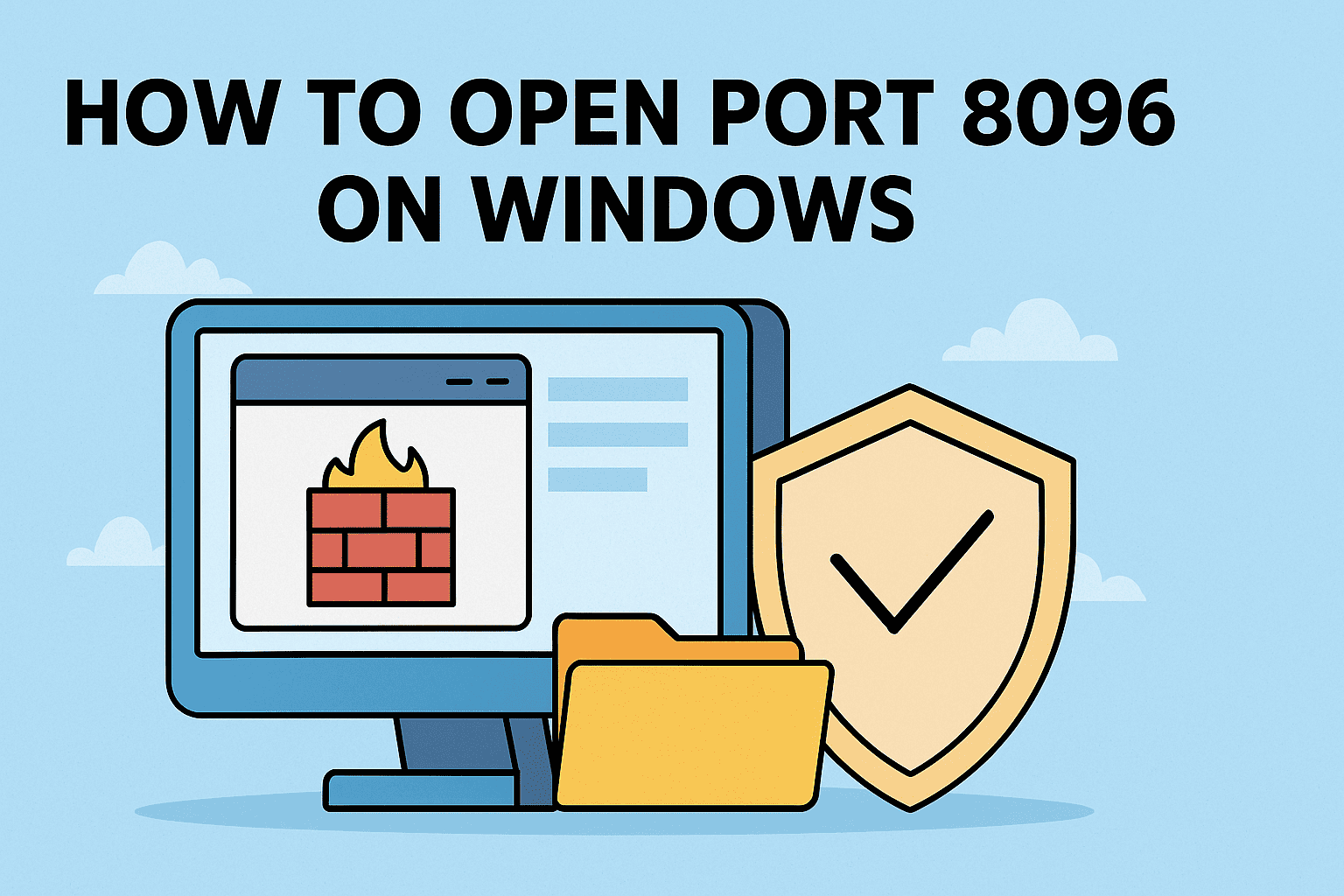Common Use Cases for Opening Port 8096
Updated on June 26, 2025, by ITarian

Are you hosting a media server like Jellyfin or Emby? Running a remote access tool? Then you’ve likely asked: how to open port 8096 on Windows. This specific port is commonly used for local web interfaces and streaming services. But unless it’s properly configured, your app may not be accessible externally—or even internally.
Opening a port safely isn’t just a matter of flipping a switch. For cybersecurity experts, IT managers, and online security leaders, it’s about balancing access with defense. In this guide, we’ll walk you through opening port 8096 using Windows Firewall, best practices to avoid exposure, and how to troubleshoot common issues.
Understanding Port 8096 and Its Use Cases
What is Port 8096 Used For?
Port 8096 is typically used by:
- Jellyfin Media Server
- Emby Server
- Custom Web Interfaces
- Remote monitoring tools
It’s an HTTP-based port (unsecured), often configured for local traffic but can also be accessed remotely if firewall rules and router port forwarding are in place.
Security Tip: If you need encrypted communication, consider binding your app to port 8920 (HTTPS) instead and securing with SSL.
Step-by-Step: How to Open Port 8096 on Windows
Method 1: Open Firewall Port on Windows 10
Let’s start with the standard way to open firewall port Windows 10:
✅ Steps:
- Open Control Panel → Click System and Security
- Select Windows Defender Firewall
- Click Advanced Settings (left panel)
- In Inbound Rules, click New Rule…
- Choose Port → Click Next
- Select TCP and enter 8096 in Specific local ports
- Click Allow the connection → Next
- Select when to apply (Domain, Private, Public) → Next
- Name your rule: e.g., Open Port 8096 Jellyfin
- Click Finish
You’ve now successfully created a rule to allow port through Windows Firewall.
Method 2: Open Port 8096 Using PowerShell (For Admins)
Want to automate the process? Use PowerShell:
powershell
CopyEdit
New-NetFirewallRule -DisplayName “Allow Port 8096” -Direction Inbound -Protocol TCP -LocalPort 8096 -Action Allow
Why This Helps:
- Great for remote teams
- Can be deployed in scripts
- Ensures reproducibility in IT workflows
Verify That Port 8096 Is Open
After configuring the firewall, validate the port status:
🔍 Test Locally:
- Open your browser and go to:
http://localhost:8096
(Assuming an app like Jellyfin is running)
Use netstat:
bash
CopyEdit
netstat -an | findstr 8096
Use Telnet or PowerShell Test-NetConnection:
powershell
CopyEdit
Test-NetConnection -Port 8096 -ComputerName localhost
If the test fails, check that:
- The app is running and listening on port 8096
- Windows Firewall isn’t blocking other profiles (e.g., Public)
- No antivirus software is interfering
Port Forwarding for External Access (Optional)
If you’re accessing from outside your network, you must configure port forwarding on your router.
Steps:
- Log into your router.
- Find Port Forwarding section.
- Add a new rule:
- External Port: 8096
- Internal Port: 8096
- Protocol: TCP
- Internal IP: Your computer’s IP
- Save and reboot the router if needed.
Caution: Exposing port 8096 publicly is not recommended unless absolutely necessary. Always enable:
- Strong passwords
- IP filtering
- VPN tunneling
- SSL (prefer port 8920 instead)
Best Practices: Opening Ports Without Sacrificing Security
When you Windows open specific port, you’re potentially exposing a surface for attack. Here’s how to mitigate risks:
- Restrict traffic by IP address
- Use strong firewall rules
- Keep apps updated to patch vulnerabilities
- Monitor open ports regularly using tools like nmap
- Use port knocker or fail2ban for remote access scenarios
Troubleshooting Common Issues
❌ Port Still Not Accessible?
- Check if your application is bound to 127.0.0.1 instead of 0.0.0.0
- Verify that another app isn’t using port 8096
- Try temporarily disabling the firewall to isolate the problem
- Check router’s NAT settings if accessing externally
❌ Getting “Connection Refused”?
- App not running or not listening on the right port
- Firewall blocking outbound requests
- ISP may be blocking certain ports (less common for 8096)
Summary Table: Opening Port 8096
| Task | Action |
| Open in Windows Firewall | Inbound Rule > Port > TCP > 8096 |
| Verify Locally | Browser, netstat, PowerShell |
| Use PowerShell | New-NetFirewallRule command |
| Remote Access | Requires router port forwarding |
| Security Tips | Use VPN, restrict IPs, avoid public exposure |
FAQ: Opening Ports on Windows
1. Is it safe to open port 8096?
It depends. For local use, yes. For remote access, add security layers like VPN or SSL.
2. Do I need to restart after creating a firewall rule?
No restart is needed. Firewall rules apply instantly.
3. Why is 8096 not working even after opening the port?
The app might not be running, the wrong IP is set, or a third-party firewall (like antivirus) is blocking access.
4. Can I open port 8096 with CMD?
Yes, via netsh or PowerShell. PowerShell is the modern preferred method.
5. How do I close port 8096 later?
Go to Advanced Firewall Settings > Inbound Rules > Find your rule > Right-click > Disable or Delete.
Final Thoughts: Access vs. Security
Knowing how to open port 8096 on Windows is essential for teams deploying self-hosted tools, media servers, or remote-access dashboards. But as cybersecurity leaders, we must always assess exposure risk. Opening a port is easy—securing it is the real challenge.
Take the Next Step: Automate and Secure Your Endpoint Fleet
Ready to manage ports, apps, users, and firewalls from a single pane of glass?
👉 Start using Itarian today – it’s free!














